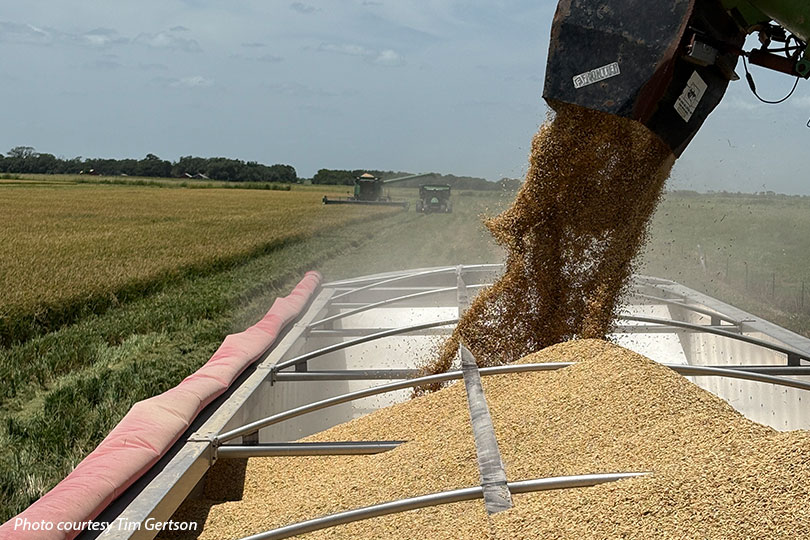By Shelby Shank
Field Editor
Rice harvest is underway in Texas, and growers are facing poor market conditions, high input costs and pest infestations.
Most growers planted rice earlier than usual this year, aiming to wrap up by April 15 for the potential to have a good ratoon crop—the second harvest that often determines profitability.
“We came out of a wet winter, so some of the earliest planted rice got a little bit delayed,” Tim Gertson, a rice grower in Wharton County, said. “But we pushed to get everything in early because that second crop is where we make our money.”
Harvest began in mid-July and wrapped up in early August, with yields averaging between 8,000 and 9,000 pounds per acre. But it’s too early to fully assess rice quality as mills continue drying kernels.
“Normally on a first crop yield, I expect about 9,000 pounds per acre, but this year I averaged closer to 8,000 pounds,” Gertson said.
Rain and extreme heat during peak flowering, along with a planthopper infestation, hurt yields across the region.
“It’s been a perfect storm of issues—from rain, heat, insects—combined with historically low prices and high input costs, we’re looking at a farming crisis that we haven’t seen in 40 or more years,” said Gertson, a Wharton County Farm Bureau member.
Rice prices currently range between $12 to $12.75 per hundredweight, far below the typical $14 to $17 range. Even with strong yields, growers like Gertson are struggling to break even.
“I can’t even describe how bad that is,” Gertson said. “We’re losing money no matter what. That’s what’s bad. We would’ve been losing money at 9,000-pound rice. We’re in a really tough situation.”
Water availability has also been a limiting factor. Some farmers rely on water deliveries from the Lower Colorado River Authority, which have been cut off for three years.
Gertson said the lack of irrigation water cut his planted acreage in half.
“Normally on my farm, I would be around 1,500 to 1,600 planted acres. I was about half of that because with the three-year cutoff, we didn’t have that irrigation water,” he said.
For the first time in his farming career, Gertson expects to reduce rice acreage next year due to poor market conditions.
“We’re in a very, very dark place right now. Next year is going to look different,” Gertson said. “This will probably be the first time since I started farming that I am going to make a severe curtailment in my acres based on price.”
New reference prices passed in recent legislation could bring relief, but they won’t take effect until next year. Until then, growers say they’re hanging on as best they can.
“Farmers are eternal optimists,” Gertson said. “When things get really bad, they think, ‘well, there’s always next year.’ The problem is right now, next year looks worse. So, you think, ‘well, maybe the year after that.’ Surely it can’t be like this forever.’”
Texas rice acreage
Overall, rice production in Texas dropped 6,000 acres to about 143,000 acres, according to Texas A&M AgriLife Extension Service.
Rice in Texas is primarily grown along the Gulf Coast, with the majority of acres concentrated in Wharton, Colorado and Matagorda counties.
Across the state, AgriLife officials said yields look about average, but it is too early to estimate quality.


Leave A Comment